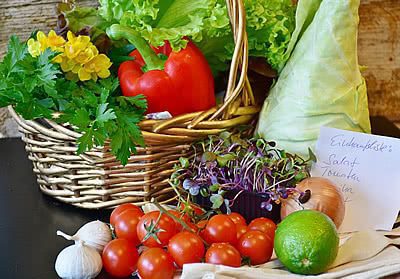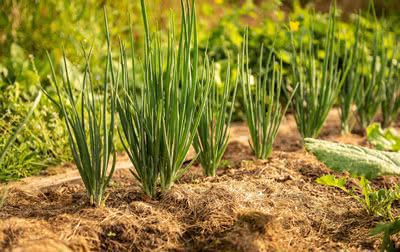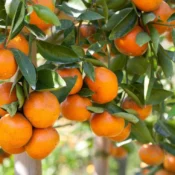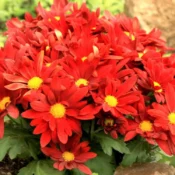Not long ago, I did a live session with Marcelo Pinhel, the executive director of Favo Technology. In our conversation and chat with the audience, the topic that kept coming up was: “What is the importance and how to create an emergency garden?” At the time of the live session and as I write this article, we are in the midst of the Coronavirus pandemic, and this has awakened and continues to awaken in thousands of people the growing need for this. But why all this? Why would you and I start a garden, right now?
The Importance:

The main reasons include independence and food security, as well as avoiding exposure by visiting supermarkets frequently. By cultivating our own vegetables, we free ourselves from the need to go to supermarkets and markets weekly to stock our fridge. If you think about it, the only real reason that obligates us to go to the supermarket is for fruits and vegetables.
They are perishable, and few can be frozen for later use. Everything else can be managed. Meats can be frozen in general, eggs, dairy, and cold cuts can be refrigerated, even our daily bread can be made at home from available flour and yeast in the pantry. Milk nowadays lasts for months in tetra pak cartons, but what about vegetables? The ones that provide us with fiber, minerals, and vitamins and are essential for a healthy diet?
Have you noticed that we always need to buy them? A head of lettuce is quite durable and can last for 12 days. But try storing arugula or kale for that long. Kale will turn yellow in a few days, and arugula will likely rot. The same goes for other greens, which are the most delicate among vegetables. When it comes to fruits, you’ll see that some can last for months, like apples or pumpkins. But what about bananas? So present in our diet, they rot within a few days of ripening. Strawberries are very perishable, as are other red fruits. Even in the fridge, they’ll become covered in mold within a few days.
And have you ever thought that by growing a home garden, you can avoid consuming pesticides used in large-scale cultivation? A home garden is best managed organically, with natural fertilizers that care for the soil and plants without poisoning rivers or nature. It might sound like a dream, but it’s possible to grow safe food at home, free from poisons, that we can eat with confidence and offer to our children.
Other important factors involve economics, as once you learn to harvest the vegetables that make up your family’s diet from your own backyard, you’ll have more money for other basic needs like hygiene, cleaning, and non-perishable foods. And as you know, the pandemic isn’t just a health crisis; it also severely affects the economy, with many people facing reduced salaries or even job loss.
Furthermore, with the pandemic requiring social isolation to protect ourselves from contagion and prevent the rapid spread of the disease, we are inevitably spending more time at home with our families and seeking productive and constructive ways to pass the time. Thus, gardening becomes an emergency in terms of occupational health, keeping us physically and mentally healthy during this complicated time. It’s well-proven that gardening has health benefits, such as moderate physical exercise that’s good for the heart and strengthens muscles and joints.
Pulling out weeds from the garden and tilling the soil will result in a lot of sweat and tired but stimulated muscles, which may not necessarily get you in shape but will at least prevent weight gain and ensure a good night’s sleep. The psychological benefits cannot be overlooked. Occupying the mind by tending to plants boosts self-esteem and prevents anxiety and depression. Many people even discover a new purpose in life, a new passion, and reconnect with nature.
Lastly, but certainly not least, we’re living in a time of awareness about the impact our actions have on the planet. We realize that everyone needs to do their part, and home gardening is directly related to this new phase. By producing our own organic compost for the healthy production of our fruits and vegetables, we’re recycling a significant portion of household waste, reducing our environmental footprint for a better world.
Now that we understand the undeniable advantages of a garden, where do we start? What should we do to put this idea into practice?
Step by Step:
1. Choose the Location: Understand that the vast majority of vegetables require full sun to thrive. Therefore, the most important criterion for choosing the location is sun exposure. Your future garden should receive 4 to 6 hours of sunlight daily to produce herbs and greens, and at least 6 hours to produce roots and fruits. Having a water source close to the area will make watering much easier. Vegetables are thirsty and won’t grow and produce if they’re thirsty. It could be a corner of your backyard, a terrace, a balcony, or even a well-lit window. Many people can create vertical gardens to make use of window light in apartments. In other words, there are no excuses not to start.

2. Protect the Space: The garden space must be protected, especially from pets. They, just like us, love to mess with plants and soil, and you wouldn’t want to see what their gardening looks like. Let’s just say it’s a bit destructive, albeit a lot of fun (for them). Especially after taking so much care to start your little garden. Cats might even think that your garden is their new bathroom. And you wouldn’t want your veggies growing alongside their necessities. Fence the area and use repellent plants around your garden, like marigolds, for example. Besides keeping pets away, they also repel pests from your garden, such as aphids and caterpillars.
3. Prepare the Soil: From poor and compacted soil, you won’t be able to harvest much. Loosen the soil to a depth of at least 15 centimeters, and if you’re planting roots like carrots and beets, you’ll need to work with double that depth. Keep in mind that even if you loosen the soil to the right depth, over time, watering and rain will settle the soil again, causing it to lose depth. An alternative to deep loosening of the soil is adding organic compost.
Compost, apart from enriching the soil, adds more volume for plants to grow. It’s essential for organic gardening, as it provides the necessary nutrients for plant development, like nitrogen, phosphorus, and potassium. It also helps maintain temperature and moisture in the beds, and root aeration. Consider the option of creating raised beds, protected on the sides with wooden planks, bricks, blocks, tiles, or whatever you have available. Raised beds make managing your garden easier and reduce the risk of erosion disrupting your beds.

4. Choose Your Plants: Most root vegetables (and many fruits) grow much better when planted from seeds. Greens and herbs can be purchased as seedlings from a nursery, or you can prepare your own seedlings at home. Take advantage of the store-bought vegetables to extract both seeds and seedlings for your little garden. For instance, a tomato plant or a pumpkin vine can easily come from a tomato or pumpkin you buy at the supermarket. You can also regrow lettuces, carrots, sweet potatoes, regular potatoes, beets, cabbages, arugula, mint, among many other vegetables. The most important thing is to experiment and choose the plants you enjoy consuming. Don’t plant something different or something you use rarely. At least not at the beginning. Resist the temptation to create a massive garden with every possible variety. Start small and expand as you get the hang of it. Fast-growing plants are ideal for beginners, like lettuce, arugula, and watercress. But don’t forget to plant strawberries, tomatoes, herbs, and some roots to get the hang of it. Consider the time of year when choosing your seeds. Each has a preferred planting season.
5. Plant: On a cloudy day, plant your seedlings and seeds, then water well afterward. Many people ask me about spacing between plants. The simplest rule is to “imagine the size of the mature plant.” Another detail to consider is access. If you plant a 2 x 2-meter square, you won’t be able to reach the middle plants for care without stepping on others. So remember that your beds should be within arm’s reach. You should be able to walk around your garden for maintenance without trampling the soft soil and beds.

6. Cover: Many gardeners forget this important detail. The soil should never be exposed. Cover your beds with straw, grass clippings, sawdust, dry leaves, and even cardboard or newspaper if you don’t have access to natural materials. Covering the beds protects them from the effects of heavy rain, watering, prevents nutrient loss, maintains moisture and heat, and prevents weed growth. It’s one of the basic rules for successful gardening.
7. Water: Don’t leave your garden to chance, depending solely on rainwater. Water daily in the morning or evening, avoiding the hottest hours of the day to minimize water loss through evaporation. There’s no need to soak the soil; water generously but don’t create an environment that favors fungi over plants. Remember that they need well-aerated soil to grow.
8. Lower Your Expectations and Learn to Enjoy Gardening:Creating a garden can be exciting and challenging, and it truly is, but don’t be discouraged if something disastrous happens. A pest attack, a strong wind, or a storm can devastate your plants. That’s how nature is. Don’t blame yourself if something goes wrong, and learn from every dead plant or one that didn’t yield. Try to understand why it happened and plant again. Each plant is a wonderful gardening teacher! See what each has to teach. Visit your garden every day and inspect carefully. The owner’s attentive eye fattens the cattle, as the old saying goes. Seeing pests at the start of an attack and new weeds sprouting is much easier to control than when they’ve taken over your plants. And don’t forget to celebrate each success, each sprouted seed, each new leaf, each flower, and each fruit. That’s the greatest joy of gardening!
Now it’s your turn to get your hands in the soil and start your home garden once and for all. To help you, Marilua Feitoza and I have developed an e-book on organic fertilization, which you can download for free. And remember to share this article with your friends and loved ones.





